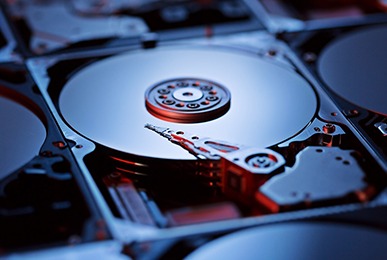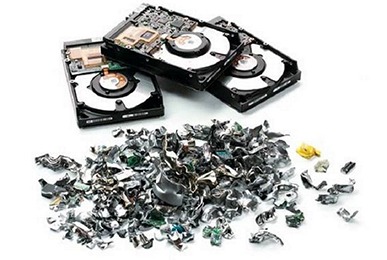
In the digital age, data security doesn’t stop at protecting live data. When devices like hard drives reach the end of their life, ensuring their proper destruction is crucial to safeguard sensitive information from falling into the wrong hands. This is where data sanitization comes into play. But what exactly does it mean to destroy a hard drive compliantly? Let’s find out.
Table of Contents
Understanding Data Sanitization
Data sanitization refers to the process of deliberately, permanently, and irreversibly removing or destroying the data stored on a memory device so that it can no longer be recovered. Not only does this process protect against data breaches, but it also ensures that businesses comply with various legal and regulatory requirements.
For businesses dealing with highly sensitive information, simply deleting files or formatting a hard drive isn’t enough. These basic methods do not fully erase the data, leaving remnants that can potentially be recovered with special software. To meet compliance standards and ensure total data destruction, more thorough methods must be employed.
Why Compliance Matters?
In an era where data breaches are common, compliance with data protection laws is more important than ever. Organizations must adhere to standards and regulations like the GDPR, HIPAA, and the Sarbanes-Oxley Act, which dictate how data should be handled and destroyed. Non-compliance can lead to hefty fines, legal repercussions, and severe damage to a company’s reputation.
For instance, improperly disposed of hard drives can be a goldmine for data thieves who can recover and exploit the information. Compliance ensures that every step of data handling, including destruction, is done securely and in accordance with the law.
Choosing the Right Data Destruction Method
There are several methods of hard drive destruction, and choosing the right one is crucial for compliance:
- Physical Destruction: This involves physically breaking the hard drive, using methods such as crushing, shredding, or incinerating. While effective, it requires specialized equipment and safe handling of potentially hazardous materials.
- Degaussing: This method uses a high-powered magnet to disrupt the magnetic fields in the hard drive, effectively destroying the data. Degaussing is suitable for many types of magnetic storage media, but it does not work on solid-state drives (SSDs).
- Software-Based Data Erasure: This involves using software to overwrite the existing data with random data. This method is effective for both HDDs and SSDs and allows the drive to be reused. However, it must be done using tools that meet certain standards like the NIST 800-88 guideline to ensure data is unrecoverable.
Steps to Compliant Hard Drive Destruction
To ensure compliance when destroying hard drives, follow these key steps:
- Develop a Data Destruction Policy: Document the procedures for data destruction, specifying which methods will be used for different types of data and storage media. This policy should align with legal requirements and industry standards.
- Keep Records: Maintain detailed records of the destruction process, including what was destroyed, how, when, and by whom. These records are crucial for proving compliance during audits.
- Use Trusted Methods: Employ destruction methods that are trusted and comply with recognized standards. For software-based erasure, look for certifications like NIST 800-88 or DoD 5220.22-M.
- Train Your Staff: Make sure employees handling data destruction are properly trained on your policies and the equipment they use. This reduces the risk of errors that could lead to data breaches.
- Verify the Process: After destruction, verify that the data is indeed irrecoverable. For physical destruction, visual inspection might be enough, but software-based methods often require running an additional verification process.
The Role of Professionals in Hard Drive Destruction
While some organizations may handle data destruction in-house, many choose to hire professional data destruction services. These companies specialize in securely destroying data, ensuring that all aspects of the process are compliant with regulatory standards. They also often provide a certificate of destruction, adding an extra layer of proof for compliance purposes.
Ensuring Compliance in Every Step
Regular Audits and Compliance Checks
To maintain the highest standards of data destruction, it’s essential to perform regular audits and compliance checks. These reviews help ensure that all procedures are up to date and adhere strictly to legal and regulatory requirements. Audits can be internal, conducted by your own compliance teams, or external, carried out by independent auditors. Regular checks not only reinforce security protocols but also build trust with clients and stakeholders by demonstrating a commitment to data security.
Innovations in Data Destruction Technology
As technology evolves, so do the methods for securely destroying data. Staying informed about the latest advancements in data destruction technology can offer new ways to improve efficiency and compliance. For instance, newer shredders and degaussers are more effective and faster, reducing the time it takes to destroy large volumes of drives securely. Software for data erasure is also continually being updated to counteract advances in data recovery technologies. Investing in these innovations can be a significant advantage in maintaining compliance and protecting sensitive information.
Environmental Considerations in Hard Drive Destruction
While the focus is often on security and compliance, the environmental impact of hard drive destruction is also significant. Proper disposal of electronic waste is crucial. Many components of hard drives and other storage devices contain harmful substances like lead and mercury. Therefore, it’s essential to follow environmental regulations related to e-waste. Partnering with e-waste recycling firms that specialize in the environmentally responsible disposal of destroyed hard drives can ensure compliance with environmental laws while also contributing to corporate social responsibility.
Partnering with the Right Destruction Service
Choosing the right data destruction partner is critical. Look for services that not only offer compliance with the latest regulations but also provide transparent processes and robust security measures. A reliable partner should offer:
- Compliance: Ensure that the service is under standards such as ISO 27001, which sets out the requirements for an information security management system (ISMS).
- Security Protocols: Check their security protocols, including transport and storage of media before destruction, to ensure they meet or exceed industry standards.
- Chain of Custody: The partner should provide a complete chain of custody documentation that tracks your data from the moment it leaves your facility to the final destruction, ensuring no data breaches along the way.
Education and Awareness
Building a culture of security within your organization is vital. Educate your employees about the importance of data security and the specific risks associated with improper data destruction. Regular training sessions and updates about new laws and technologies can empower your staff to handle data responsibly throughout its lifecycle, including the final stage of destruction.
Safeguarding Your Data’s End-of-Life
The importance of hard drive destruction in the context of data sanitization cannot be overstated. With stringent regulations and the increasing risk of data theft, ensuring that old data is irretrievably destroyed is crucial for any organization that handles sensitive information. By implementing robust destruction processes, maintaining compliance with legal requirements, embracing technological advances, considering environmental impacts, and choosing the right partners, businesses can secure their data’s end-of-life effectively.
Stay vigilant, stay compliant, and take control of your data’s lifecycle to safeguard its integrity right through to the very end.





